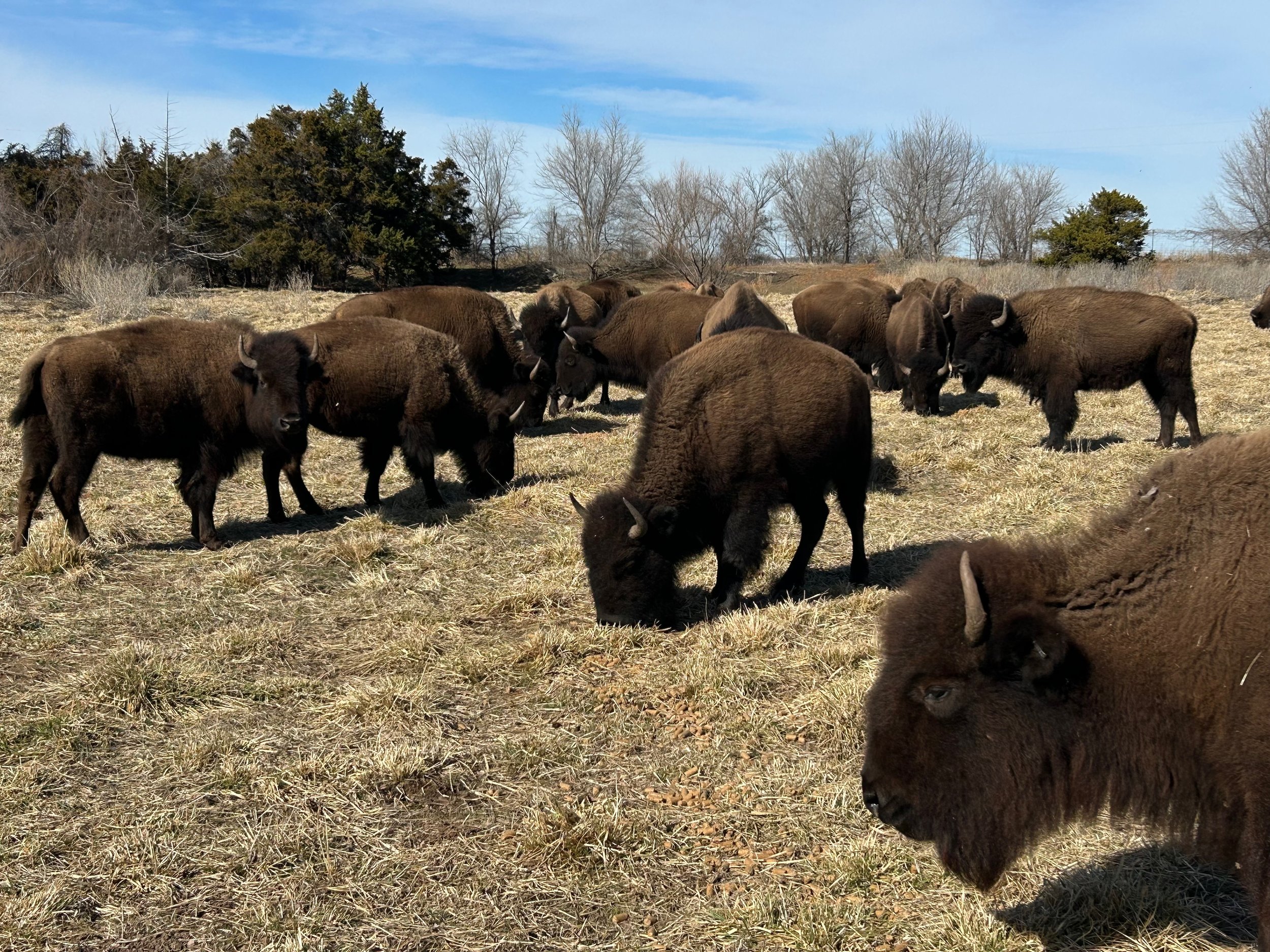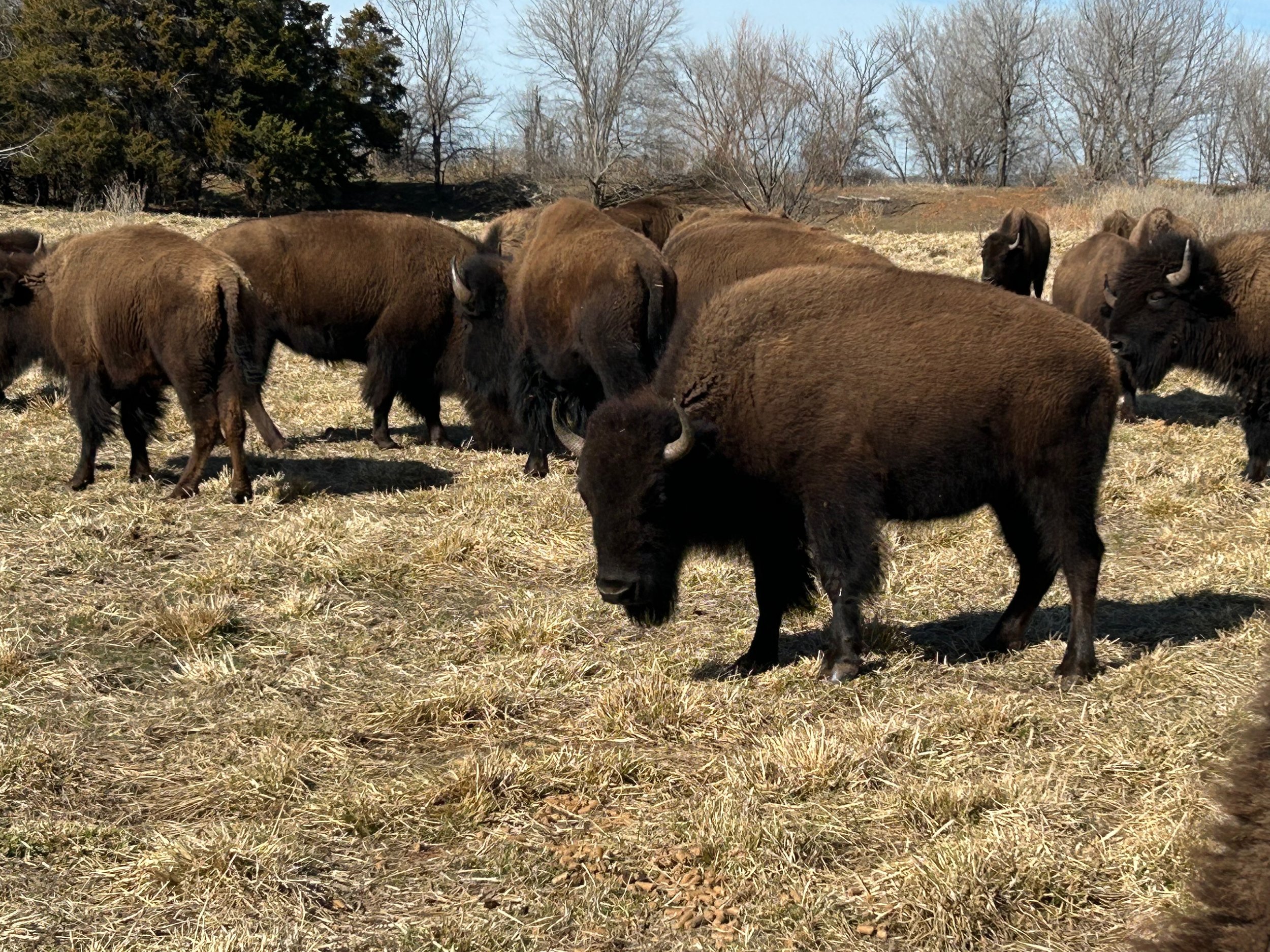Our Rancher Partners: Tim and Jessica Harjo
Summary:
Tim Harjo, a Buffalo rancher from Sovereign Ranch in Apache, OK, highlights the challenges Native ranchers face in the current agricultural system, which largely caters to non-Native farmers and cattle ranchers. Despite these barriers, Tim and his wife, Jessica, pursued their dream of raising Buffalo to reconnect their family with their heritage and culture.
Key Points:
Lack of Support for Native Ranchers
Tim notes that USDA and FSA grant opportunities primarily benefit non-Native ranchers, leaving Native Buffalo ranchers without tailored support.Building a Buffalo Herd
Tim and Jessica partnered with the Fort Sill Apache Tribe to manage Buffalo donated from the Wichita Mountain Wildlife Refuge.
Land Expansion and Challenges
In July 2024, they secured a 5-year lease with the Kiowa Tribe for 40 acres, plus an additional 40 acres from the Comanche Nation, though fencing upgrades are needed.
Funding and Cultural Commitment
All ranch operations have been self-funded.
Spiritual and Cultural Significance
Raising Buffalo is more than financial — it’s a deep cultural connection for the Harjo family.
Despite the difficulties, the Harjos are committed to Sovereign Ranch’s long-term success, ensuring Buffalo remain central to their culture and livelihood.
Read full story below
As a Buffalo rancher, Tim Harjo of Sovereign Ranch in Apache, OK, acknowledges that the current agricultural infrastructure presents challenges for ranchers like him.
“When I go into the FSA office or the USDA office, the local farm offices, you see all these grant opportunities on the wall. Although the opportunities are welcome, there’s really nothing set up for Native ranchers and farmers,” he said, noting that opportunities are set up to subsidize non-Native farming and cattle ranching. “Such opportunities are offered and processed through the lens of non-Indian interests.”
Tim (Chiricahua Apache, Comanche, and Seminole) and his wife Jessica (San Carlos Apache) wanted to expose their three children to the culture of their heritage. The couple had talked about cattle ranching for 10 years, given Tim’s family’s extensive history in the field. After living in California, the Harjos decided to move to Apache, OK, in July 2022, where Tim grew up. The couple wanted to expose their children to the cultural opportunities they weren’t getting in California.
Tim and Jessica began discussing opportunities for growing a bison herd. They discovered that the Wichita Mountain Wildlife Refuge, located on a 60,000-acre parcel with roughly 1,000 bison, runs a donation program where their herd is rounded up, culled, and donated to tribes. The Fort Sill Apache Tribe expressed interest in acquiring bison from the program, and Tim offered to manage the herd, provide the land and resources, and care for the animals. By November 2023, Sovereign Ranch had 49 animals, but the land initially used for their care was insufficient in both space and fencing. The Buffalo were jumping over and even walking through the fence.
It became clear that the herd had to be moved, and in mid-July 2024, Tim secured a 5-year lease with the Kiowa Tribe for a 40-acre parcel with proper fencing, specifically outfitted for Buffalo. He also acquired an additional 40-acre parcel from the Comanche Nation, contiguous to the Kiowa property. However, they are planning to upgrade the fencing before introducing animals to it — an undertaking that could cost around $10,000. In addition, Tim has 80 acres of land for hay and future expansion opportunities through a new business partner who owns 160 acres. The goal for Sovereign Ranch is to have a total of 1,000 acres to support 300 animals in the future. Currently, Sovereign Ranch has about 22 Buffalo after selling a few animals, harvesting, and losing a few from illness and injury.
“We are trying to position ourselves for the long term,” Tim said. “We had very humble beginnings and are still in that first phase of learning how to do all this but also making adequate plans for space for the animals and native grass.”
Tim said he wished he’d known about Tanka Fund when they first started their journey because there is comfort in knowing that he and his family aren’t the only ones who feel a strong connection to ranch bison this way.
“I'm glad that you guys are doing this. It’s a shame that more Native ranchers aren't doing the same. In the last year or two, there’s been a lot of imagery and videos about bringing back the bison — documentaries, PBS, and a lot of people are talking about it,” he said. “People are always in disbelief that we have our own herd and are doing this.”
Tim also noted that in the southern part of Oklahoma, the landscape has been set up for cattle, not bison, making it difficult to find proper locations for bison.
“There are larger sections of land for the Cheyenne, Arapaho, and Osage, but the southern part is quartered up and fenced off so large herds can’t be put together,” he continued.
So far, everything at Sovereign Ranch has been funded out of pocket, and Tim mentioned that he often gets questions from non-Native ranchers about why he would even take this on, given that ranching bison is more expensive than cattle. He recalled an incident where a non-Native cattle rancher tried to lecture him about how special bison were and how to properly care for them, without any grasp of the efforts by non-Natives to exterminate the entire species in the 1880s.
“We lived in symbiosis with these animals, and now we’re being told how to properly treat these animals. That’s laughable.’”
“He didn’t seem to get the irony,” Tim said.
But despite the challenges, Tim, who is a lawyer by trade, speaks passionately about continuing this work—not only for future financial opportunities but also for the cultural connection that inspired them to move forward with their mission. He said that in just this short time, they’ve already done 10 years’ worth of cultural learning. His oldest daughter has already started harvesting animals, has her own set of knives, and has expressed a strong interest in working with the herd when they visit the ranch on weekends.
“Bison are very much a part of traditional life for Comanche — especially. I readily identify with my Comanche culture,” he said. “There is still a deep reverence, and we get a lot of spiritual completeness from being around these animals, being on the land, and being on the land with them. It’s a connection point that we want to regenerate and pass on to our families and communities.”
#TankaFund #BuffaloConservation #SupportNativeRanchers #WildlifePreservation #ProtectTheBuffalo #SustainableRanching #NativeAmericanHeritage #ConservationEfforts #WildlifeProtection #SupportIndigenousCommunities #BuffaloRestoration #DonateForACause #WildlifeSupport #CulturalPreservation #IndigenousLandManagement #HelpSaveTheBuffalo #BuffaloHeritage #SustainableAgriculture #LandsLivesEconomies #Donate #Buffalo #Bison #TheReturn #NativeAmerican #Indigenous #Resilience #Restoration #CommunityEmpowerment #Sustainability #SustainableRanching #BuffaloRanching #CulturalRevitalization #Biodiversity #TankaImpact #foodsovereignty






